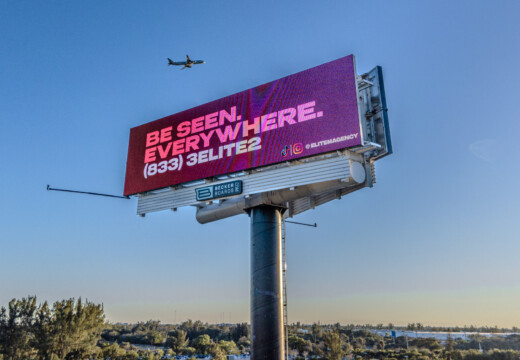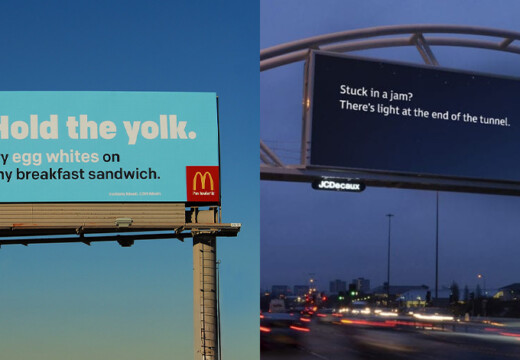Choosing the right billboard location can make or break your advertising campaign. Here’s a quick rundown of the 7 key factors to consider:
- Traffic Patterns: Look at daily vehicle counts, peak hours, and traffic flow to ensure maximum exposure.
- Visibility: Ensure a clear view with the right height, angle, and no obstructions like trees or buildings.
- Target Audience: Match the location’s demographics (age, income, commuter trends) with your audience.
- Proximity to Business Hubs: Place billboards near shopping centers, offices, or entertainment zones for better reach.
- Local Regulations: Check zoning laws, size restrictions, and permit requirements to stay compliant.
- Budget: Balance cost with expected performance using metrics like daily impressions and CPM.
- Digital Displays: Use digital billboards for flexible, real-time updates and targeted scheduling.
Quick Tip: Digital platforms like Blip can provide real-time data, helping you select high-performing locations within your budget.
Four Tips for Better Billboards
1. Traffic Count and Patterns
Traffic volume and movement play a big role in how effective a billboard can be. Knowing these patterns helps you get the most out of your advertising.
When assessing traffic, look at both the number of vehicles and how easily drivers can see your ad. A spot with steady traffic moving at moderate speeds works better than one where cars are zooming by, leaving little time for your message to sink in.
"Billboards are one of the most impactful ways to advertise, and with Blip, you spend a fraction of what you would end up paying elsewhere", says Ray Bowens, Founder of Hashtag-Vape.
Here are some tips for finding the best billboard locations:
- Peak Hours: Focus on spots busy during morning and evening commutes when your audience is on the road.
- Speed Zones: Target areas where traffic moves at 25–45 mph, giving drivers enough time to notice and read your ad.
- Traffic Flow: Identify whether the area sees mostly commuters, tourists, or a mix of both to align with your target audience.
2. Clear View Distance
The distance from which people can clearly see your billboard plays a big role in its success. Think about factors like how far away viewers are, the height of the billboard, its angle, and anything that could block the view – like trees, buildings, or hills. These elements directly affect how easily your ad grabs attention and how well it communicates with passing traffic.
3. Area Demographics
The demographics of a location play a major role in how effective your billboard will be. To make an impact, your billboard should be placed where your target audience lives, works, or travels. Factors like age, income, and lifestyle heavily influence consumer behavior.
When evaluating area demographics, take a close look at population density and commuter trends. For example, a billboard aimed at young professionals might perform best in business districts or trendy neighborhoods. On the other hand, family-focused products are likely to do well near residential areas or shopping centers. These insights can guide strategic billboard placement.
Here are some key demographic factors to consider:
| Demographic Factor | What to Analyze |
|---|---|
| Income Levels | Median household income and spending power |
| Age Distribution | Concentration of specific age groups |
| Commuter Patterns | Work locations and common travel routes |
| Shopping Behavior | Presence of retail hubs and entertainment zones |
| Business Activity | Density of businesses and types of industries |
Understanding these factors helps refine your placement strategy.
Kimberly Pinkson, owner of Pretty In Pinkston, shared her thoughts:
"Blip works for us. It’s a different medium, and it brings a lot of exposure. It sets us apart, and that’s what I like."
Keep in mind that demographics can vary throughout the day. For example, professionals are more likely to be reached during rush hours, families on weekends, and entertainment seekers in the evenings.
sbb-itb-2e2e93f
4. Business District Access
Placing your billboard near busy commercial areas – like shopping centers, office complexes, or entertainment venues – can significantly boost its visibility. These spots see steady activity during business hours and peak exposure during morning and evening commutes.
Here’s a quick breakdown of what different district types offer:
| District Type | Benefits |
|---|---|
| Shopping Centers | Heavy foot traffic and consumers ready to make purchases |
| Office Complexes | Access to a professional audience and B2B opportunities |
| Entertainment Zones | Evening visibility and leisure-focused viewers |
| Mixed-Use Areas | A blend of audiences throughout the day |
| Commercial Corridors | Consistent vehicle traffic and longer viewing times |
When choosing a location in a business district, keep these factors in mind:
- Peak Traffic Hours: Focus on times when foot and vehicle traffic are at their highest.
- Viewing Angles: Make sure your billboard is easy to see from major roads.
- Competitive Presence: Pick a spot where your ad stands out from the crowd.
- Nearby Businesses: Think about how the surrounding businesses align with your message.
These considerations help fine-tune your strategy and ensure your billboard gets the attention it deserves.
5. Local Billboard Laws
When placing a billboard, it’s crucial to follow local laws. Zoning authorities often divide areas into zones with specific rules. For example, billboards are typically allowed in commercial areas but may face restrictions or bans in residential, historic, or scenic districts. Additionally, many regulations outline requirements for billboard size and spacing. Always check with local planning and zoning offices to understand the latest standards.
Local rules also govern how content is displayed, including limits on brightness, animation, message rotation, and operating hours. Reviewing these guidelines beforehand can help you avoid fines or expensive adjustments later.
You’ll also need the right permits, which may require:
- Detailed site plans
- Approval from the property owner
- Engineering reports
- Documentation related to environmental factors
- Proof of compliance with safety standards
Regular maintenance is just as important. This includes routine safety checks and addressing repairs promptly to ensure everything stays in good condition. Being prepared for changes in regulations will also help you stay ahead.
To simplify the process, consider working with experienced billboard operators who know the local laws inside and out. Staying informed and compliant not only avoids legal trouble but also helps your campaign achieve maximum impact.
6. Price vs. Performance
When choosing billboard locations, balancing cost with expected results is key to getting the most out of your advertising budget. A thorough cost-performance analysis relies on earlier insights like visibility and traffic data, using metrics such as daily impressions and average CPM to assess the value of a location.
Here are some important metrics to consider when analyzing costs:
| Metric | What to Evaluate |
|---|---|
| Daily Traffic Count | Compare cost per viewer using verified traffic data |
| Peak Hour Visibility | Determine value during high-traffic times like rush hours |
| Demographic Match | Measure ROI based on how well the audience aligns with your target |
| Engagement Time | Account for how long people view the ad at different speeds |
For smaller businesses, digital billboards now offer more affordable options with flexible pricing models. To make the most of your budget:
- Start with a test campaign in busy areas.
- Track performance metrics regularly.
- Adjust placement based on actual engagement results.
- Plan around seasonal traffic trends.
- Keep local business activity in mind.
The rise of marketplace platforms for digital billboard advertising has changed the game. With real-time bidding and transparent pricing, businesses can make smarter, more informed choices about their outdoor advertising. This approach helps refine strategies while keeping costs under control.
7. Digital Display Options
Digital billboards have transformed outdoor advertising by offering dynamic features like strategic scheduling and real-time content updates. These tools give advertisers more control over when and how their messages reach audiences, making campaigns more effective.
Here’s how digital displays can enhance billboard location strategies:
| Feature | Benefit |
|---|---|
| Time-Based Targeting | Schedule ads during peak traffic hours to reach more viewers. |
| Content Flexibility | Instantly update messages for events, promotions, or seasonal needs. |
| Weather Integration | Adapt ads to current weather conditions for better relevance. |
| Performance Analytics | Monitor and analyze metrics to improve location and ad performance. |
These features set digital billboards apart from traditional ones, offering advertisers a modern and efficient way to engage their audience.
When choosing a location for digital billboards, keep these factors in mind:
- Display Quality: High-resolution screens ensure clear visibility, even in different lighting conditions.
- Screen Positioning: Angles and elevation should be optimized for maximum exposure.
- Network Connectivity: A strong connection is crucial for timely updates and smooth operation.
- Power Infrastructure: Reliable power ensures consistent functionality.
Digital displays can deliver high-impact advertising without breaking the bank. As Ray Bowens, Founder of Hashtag-Vape, puts it:
"Billboards are one of the most impactful ways to advertise, and with Blip, you spend a fraction of what you would end up paying elsewhere".
Conclusion
Choosing the right billboard location involves weighing factors like traffic data, visibility, audience demographics, proximity to key areas, local regulations, costs, and digital tools. When these elements are aligned, advertising efforts can deliver stronger results and better ROI.
Modern digital platforms make this process much easier. For example, Blip’s interactive marketplace offers vital metrics such as daily impressions and CPM rates for thousands of billboard locations across the U.S. This data-driven approach helps advertisers make smarter decisions by focusing on:
| Factor | Benefits of Digital Platforms |
|---|---|
| Traffic Analysis | Access to real-time impression data |
| Demographics | Insights into audience details by location |
| Performance Tracking | Tools to monitor and analyze campaign results |
| Budget Management | Flexible options starting at $20 per day |
By integrating these considerations into their planning, advertisers can craft campaigns that resonate with their target audience and meet their goals. The trick is to balance these factors with the campaign’s specific objectives and budget.
Digital billboard technology has reshaped outdoor advertising, making it more accessible and measurable than ever. With tools for precise location selection, real-time performance tracking, and adaptable campaign management, businesses of all sizes can now use billboards to make a strong impact. This shift in technology gives advertisers the ability to create campaigns that are both flexible and results-driven.


